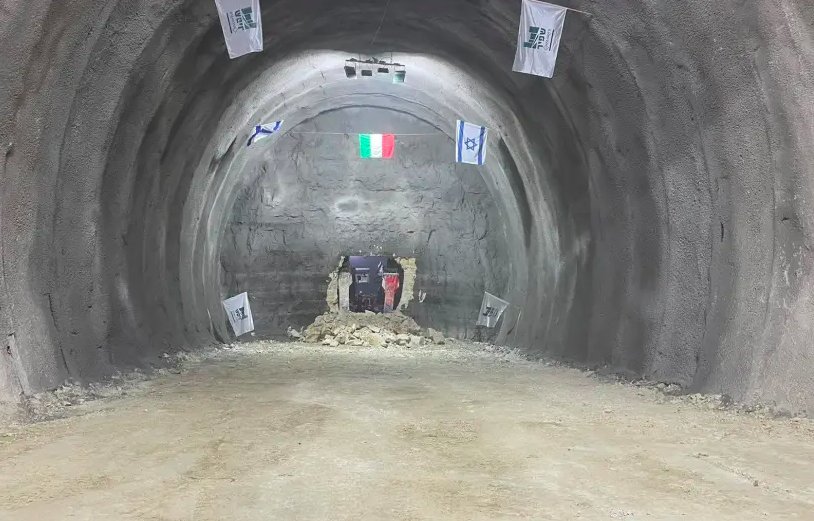Jerusalem's new entrance nears opening as mountain tunnels constructed

In the newest development of the years-long effort to open a new entrance to Jerusalem to alleviate congestion at its main one, the mountain tunnels for the new Route 16 have been dug out.
In a project titled "Har Nof," meaning both "Mountain View" in English and referring to the Israeli settlement that was once officially by the same name, double tunnels for passage into Jerusalem were completed, each approximately one-and-a-half kilometers long.
Route 16 is intended to progress from Route 1's Motza Interchange straight to the center of the city, close to Shaare Zedek Medical Center and the Givat Mordechai neighborhood.
The billion-shekel highway aims for completion sometime during 2022. The massive tunnels were just one portion of a long list of tasks – including the casting of exit bridges, the completion of the Revida Interchange including a control structure, and the installation of traffic management systems – all necessary in order to complete the project.
The highway will be six kilometers in length, with two directions and two lanes each, as well as three interchanges: Revida, Motza, and Bait. The intended speed limit will be 110 kph (kilometers per hour).
Transportation Minister Miri Regev explained that the new highway will also open the option for more light rail lines and other such new public transportation options to, from and within Jerusalem.
The project was a massive one, aggravated by the difficult terrain leading up to Jerusalem, forcing the project to do over 100,000 cubic meters of earthworks – the equivalent of 800 Olympic pools.
The project is a cooperative one between the Transportation Ministry, The National Roads Company of Israel and Shapir Pizzarotti Railways, the latter being a partnership between Israel's Shapir Civil and Marine Engineering and the Italian firm Impresa Pizzarotti & C SpA.
Shapir has been criticized in the past for its construction past the "Green Line". Both it and Pizzarotti are family-owned businesses.
The Italian-Israeli partnership is providing a large group of workers to construct the highway.
But Route 16 is not the only project currently in the works to ease the entrance and exit from Jerusalem. Sakharov Junction, proceeding west from the city, as well as the widening of Route 1 at the entrance of the city, are just a few other actions taken to make transit surrounding the Holy City more comfortable.
On Monday, Sakharov Junction's lanes exiting Jerusalem were opened, therein shutting several traffic lights and allowing for smoother transit in the region. The entering lanes had already previously been opened.
This project, organized by the Jerusalem Municipality and the Transportation Ministry, is working with Moriah Jerusalem Development Corporation, which in itself was established by the Jerusalem Municipality to develop Jerusalem's infrastructure.
The entire project, worth millions of shekels, spans over approximately two-and-a-half kilometers and plans to include a public transportation lane, broadening Route 9's lanes at the entrance to the city, geometric restructuring of the streets, and the regulation of traffic lanes and routes.
The project, if all goes according to plan, will be completed sometime in 2021.
"Pedestrians, private vehicles, buses, light rails and Israel Railways – all will meet and integrate optimally at the entrance to the city," Regev said about the project.
Related News
